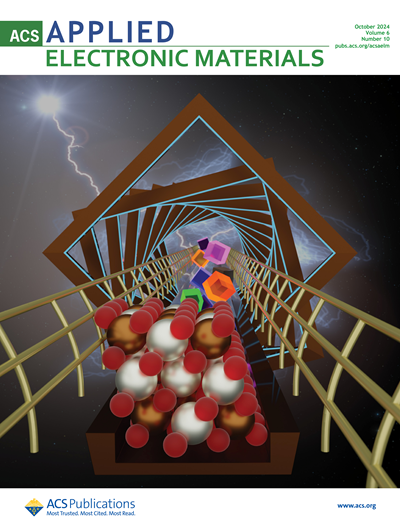Characterization of Gelatin-Polycaprolactone Membranes by Electrospinning
IF 4.7
3区 材料科学
Q1 ENGINEERING, ELECTRICAL & ELECTRONIC
引用次数: 0
Abstract
New advances in materials science and medicine have enabled the development of new and increasingly sophisticated biomaterials. One of the most widely used biopolymers is polycaprolactone (PCL) because it has properties suitable for biomedical applications, tissue engineering scaffolds, or drug delivery systems. However, PCL scaffolds do not have adequate bioactivity, and therefore, alternatives have been studied, such as mixing PCL with bioactive polymers such as gelatin, to promote cell growth. Thus, this work will deal with the fabrication of nanofiber membranes by means of the electrospinning technique using PCL-based solutions (12 wt.% and 20 wt.%) and PCL with gelatin (12 wt.% and 8 wt.%, respectively). Formic acid and acetic acid, as well as mixtures of both in different proportions, have been used to prepare the preliminary solutions, thus supporting the electrospinning process by controlling the viscosity of the solutions and, therefore, the size and uniformity of the fibers. The physical properties of the solutions and the morphological, mechanical, and thermal properties of the membranes were evaluated. Results demonstrate that it is possible to achieve the determined properties of the samples with an appropriate selection of polymer concentrations as well as solvents.利用电纺丝技术表征明胶-聚己内酯膜
材料科学和医学的新进展使得新型生物材料的开发日益复杂。聚己内酯(PCL)是应用最广泛的生物聚合物之一,因为它具有适合生物医学应用、组织工程支架或药物输送系统的特性。然而,PCL 支架并不具备足够的生物活性,因此,人们开始研究替代品,如将 PCL 与明胶等生物活性聚合物混合,以促进细胞生长。因此,本研究将利用电纺丝技术,使用 PCL 溶液(12 wt.% 和 20 wt.%)和 PCL 与明胶(分别为 12 wt.% 和 8 wt.%),制造纳米纤维膜。甲酸和乙酸以及二者不同比例的混合物被用于制备初步溶液,从而通过控制溶液的粘度来支持电纺丝工艺,进而控制纤维的尺寸和均匀性。对溶液的物理性质以及膜的形态、机械和热性能进行了评估。结果表明,只要适当选择聚合物浓度和溶剂,就能使样品达到确定的特性。
本文章由计算机程序翻译,如有差异,请以英文原文为准。
求助全文
约1分钟内获得全文
求助全文
来源期刊

ACS Applied Electronic Materials
Multiple-
CiteScore
7.20
自引率
4.30%
发文量
567
期刊介绍:
ACS Applied Electronic Materials is an interdisciplinary journal publishing original research covering all aspects of electronic materials. The journal is devoted to reports of new and original experimental and theoretical research of an applied nature that integrate knowledge in the areas of materials science, engineering, optics, physics, and chemistry into important applications of electronic materials. Sample research topics that span the journal's scope are inorganic, organic, ionic and polymeric materials with properties that include conducting, semiconducting, superconducting, insulating, dielectric, magnetic, optoelectronic, piezoelectric, ferroelectric and thermoelectric.
Indexed/Abstracted:
Web of Science SCIE
Scopus
CAS
INSPEC
Portico
 求助内容:
求助内容: 应助结果提醒方式:
应助结果提醒方式:


